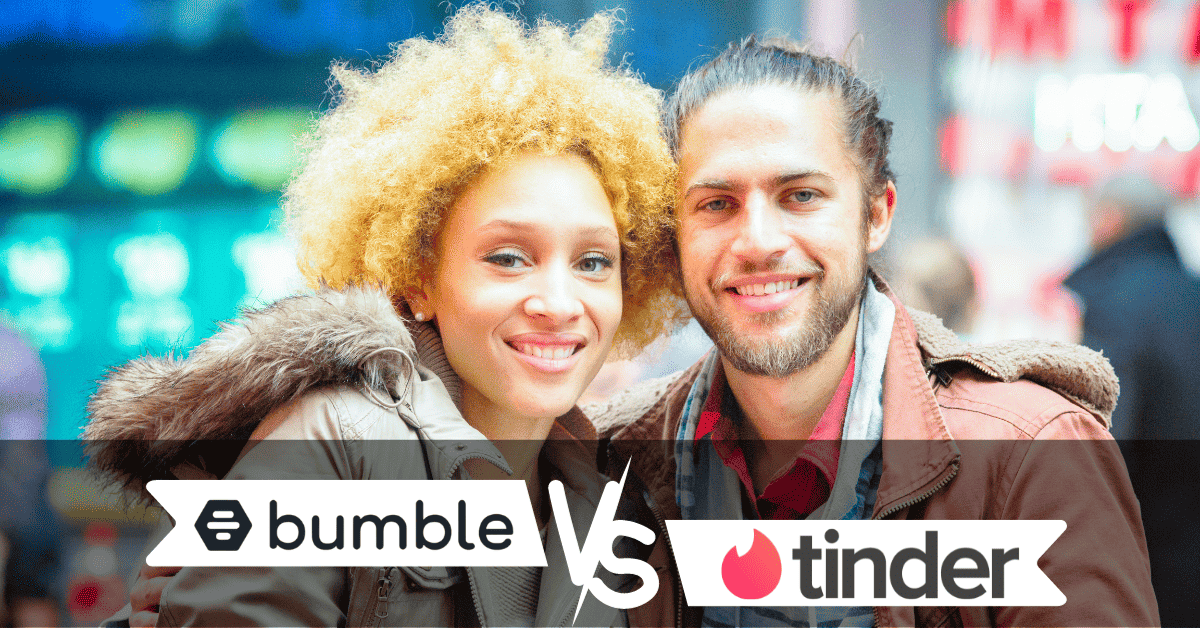When it comes to online dating, Bumble and Tinder are head and shoulders above the competition, at least when it comes to go-to dating apps. With so many potential matches available, you can find a serious partner, a casual hookup, or something in between on either one of these platforms. But where do you start when deciding how to choose between them? That’s we we come in! We’ve broken down the key aspects of each app to help you decide which platform is the best fit for your dating needs.
Key Differences at a Glance
It’s not always easy to find your way around the current dating scene, but the Bumble and Tinder dating apps can be a huge help. Despite their shared goal, these two platforms cater to quite different user bases and employ very different strategies to make those connections. To help you decide between Bumble and Tinder, we’ve included a quick overview of the two apps’ essential features.
Interaction

- Bumble has a user-friendly interface that makes swiping and messaging simple. One standout feature is that only women can initiate conversations after matching, which some users find empowering and less intimidating.
- Tinder is renowned for its easy-to-use swipe feature. It doesn’t have the same restriction on messaging as Bumble, meaning either party can initiate a conversation. This provides a bit more freedom but can also result in more unsolicited messages.
Features and Functionalities

- Bumble:
- Bumble BFF and Bumble Bizz: Additional modes for making friends or networking professionally.
- Video Calls: In-app video calling for safe virtual dates.
- SuperSwipe: Premium feature to let someone know you’re very interested.
- Tinder:
- Boost and Super Boost: Paid features to increase visibility.
- Tinder Passport: Ability to swipe in different locations.
- Swipe Night: An interactive game experience for users.
Algorithm and Matching

- Bumble’s algorithm considers multiple factors like location, activity, and even how complete your profile is. It also aims to show you profiles that have already swiped right on you.
- Tinder’s algorithm, called Elo, factors in desirability based on how many people swipe right on you. It’s also influenced by activity and other behavioral metrics.
Pricing

- Bumble: Offers a free tier with optional premium features like Bumble Boost and Bumble Premium. Prices range from $16.99/week to $29.99/month, depending on the plan.
| Membership Plan | Cost Per Month | Total Cost |
|---|---|---|
1-Month Membership | $29.99 | $29.99 |
3-Month Membership | $19.99 | $59.99 |
6-Month Membership | $16.99 | $99.99 |
- Tinder: Tinder also offers a free tier but has three main premium options: Tinder Plus, Tinder Gold and Tinder Platinum. Prices vary by age, starting from $4.50/month to $26.99/month.
| Package | Length | Price Per Month | Total Cost |
|---|---|---|---|
Plus | 1 month | $13.49 | $13.49 |
Plus | 6 months | $6.75 | $40.50 |
Plus | 12 months | $4.50 | $54.00 |
Gold | 1 month | $22.49 | $22.49 |
Gold | 6 months | $11.25 | $67.50 |
Gold | 12 months | $7.50 | $90.00 |
Platinum | 1 months | $26.99 | $26.99 |
Platinum | 6 months | $13.50 | $81.00 |
Platinum | 12 months | $9.00 | $108.00 |
Safety

- Bumble:
- Photo Verification: To prevent catfishing.
- In-app Video Call: Allows for safe virtual dates before deciding if you want to meet up in person.
- Tinder:
- Panic Button: Provides emergency assistance during dates.
- Photo Verification: To verify people are who they say they are.
Demographics
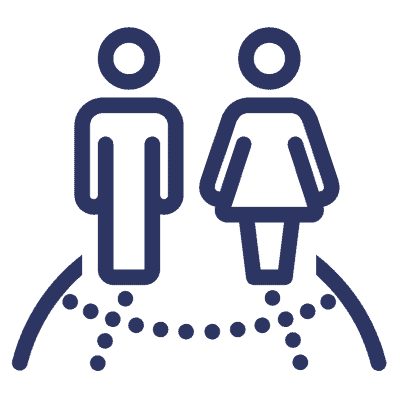
- Bumble: Often lauded for catering to a more mature, relationship-focused crowd. There are slightly more women than men on Bumble.
- Tinder: A younger demographic, generally more focused on hookups or short-term dating. The user base is more male.
Whether you prefer the woman-initiated conversations of Bumble or the freedom and larger user base of Tinder, both apps offer a unique set of features and benefits. Ultimately, the choice depends on your specific needs and what you want to achieve in your online dating experience.

Background and History: Bumble vs Tinder
In today’s digital age, Bumble and Tinder have emerged as juggernauts in the online dating industry. Understanding the history and background of each can offer insights into their different approaches and features.

Bumble
Founded by Whitney Wolfe Herd in December 2014, Bumble was designed with women’s empowerment in mind. Wolfe Herd was also a co-founder of Tinder but left the company amid a cloud of tension and legal issues.
Bumble’s core philosophy revolves around empowering women to make the first move in romantic interactions. This principle extends to its other modes, Bumble BFF and Bumble Bizz, designed for making friends and networking, respectively.
Bumble has experienced significant growth since its inception, expanding its features and going public in February 2021. As of 2022, the app has amassed over 100 million users globally.

Tinder
Launched in September 2012 by Sean Rad, Jonathan Badeen, Justin Mateen, Joe Munoz, Dinesh Moorjani, and Chris Gylczynski, Tinder has been a game-changer in the world of online dating.
Tinder popularized the “swipe” feature, which has become ubiquitous in the dating app landscape. The app focuses on simplifying the process of meeting new people without any stipulations on who initiates contact.
Tinder has been nothing short of a cultural phenomenon, growing rapidly to become one of the most downloaded apps worldwide. Owned by Match Group, it boasts an estimated user base of over 50 million people as of 2022, and it operates in nearly 200 countries.
While Bumble was born out of a feminist ethos and focuses on empowering women, Tinder has prioritized scale and simplicity since its inception. Both have successfully carved out significant spaces in the dating app world but cater to slightly different needs and demographics. Understanding their backgrounds can help you decide which app aligns more closely with your own dating goals.
Free Trial Comparisons: Bumble vs Tinder
Both Bumble and Tinder offer free versions that allow users to experience the core functionalities of the apps. However, the extent of what you can do on these platforms without paying varies. Here’s a look at what each app offers in its free trial or free tier:

Bumble Free Trial
- Swiping and Matching: Users can swipe right or left and match with other profiles.
- Messaging: Once matched, women have 24 hours to initiate a conversation. Men have 24 hours to respond.
- Backtrack: Make an oopsie while swiping too quickly? You can backtrack (undo a left swipe) once a day for free.
- Daily Extend: Male users can extend one match per day for an additional 24 hours.
- Basic Filters: Limited search filters for age, distance, etc.

Tinder Free Trial
- Swiping and Matching: Unlimited swiping was a feature but has since been capped in some locations to combat spammy behavior.
- Messaging: Either party can initiate conversations once matched, with no time limits.
- Single Super Like: Users receive one Super Like per day to stand out from a potential match.
- Basic Filters*: Filter matches by distance, age range, and more.
- Ads: Unlike Bumble, the free version of Tinder includes ads.
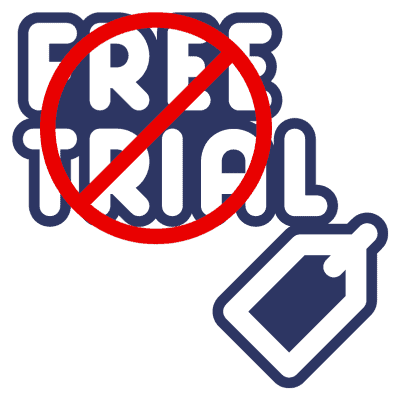
Free Trial Limitations
- Limited Swipes: Both Bumble and Tinder have a limitation on the number of profiles you can like in 24 hours in their free versions.
- No Advanced Filters: Free users don’t get access to advanced filters like education, profession, or political leanings.
- No Boosts or Super Swipes: These premium features are locked behind the paid versions of both apps.
Both Bumble and Tinder offer decent free trials that allow you to get a feel for the apps before committing financially. Bumble offers a bit more functionality, like the ability to backtrack a swipe, and it doesn’t have ads in its free version. Conversely, Tinder gives more freedom in terms of who can initiate conversations and doesn’t put a time limit on messaging. Your choice might depend on which features you find more valuable in your dating experience.
Success Rates: Bumble vs Tinder
Determining “success rates” for dating apps can be a challenging endeavor, largely because success can be defined in many different ways: long-term relationships, satisfying dates, or even simple engagement with the platform. Both Bumble and Tinder boast various success stories, but their aims and user bases are different, affecting the types of relationships most often formed on each platform.

Bumble
- Long-term Relationships: Bumble is often perceived as a platform more suitable for people looking for serious relationships. The structure of women initiating conversations might contribute to this perception. Bumble itself claims to be the dating app where “the most relationships and weddings” originate.
- User Satisfaction: In various surveys and studies, Bumble users often cite a higher satisfaction level than other dating apps, citing the quality of matches and conversations as a major plus.
- Key Stats:
- More than half of Bumble users are reportedly looking for something serious.
- The app had a 42% increase in messages sent during the pandemic, indicating high user engagement.

Tinder
- Casual Relationships: Tinder is often associated with more casual relationships or hookups. While long-term relationships certainly do start on Tinder, the platform’s reputation leans more towards shorter-term connections.
- User Satisfaction: Tinder users frequently mention the sheer volume of matches as both a benefit and a drawback. More matches can mean more opportunities, but it can also mean more time spent sifting through less compatible options.
- Key Stats:
- Tinder boasts over 55 billion matches since it launched.
- A study showed that over 20% of relationships started online were initiated on Tinder, but this includes all types of relationships, not just long-term.
If you’re looking for a long-term, serious relationship, you may find more like-minded individuals on Bumble. If you’re open to a wider range of relationship types, or if you’re not quite sure what you’re looking for, Tinder’s larger user base could offer a wider variety of potential matches. Both platforms have been responsible for countless relationships of all types, so either could be the right fit depending on your individual needs and goals.
Signing Up: Bumble vs Tinder
The sign-up process for both Bumble and Tinder is relatively straightforward, designed to get you swiping as soon as possible. However, there are some differences in the steps and the information required. Here’s a breakdown:

Bumble
- Download and Open App: Available on both Android and iOS.
- Signup Options: You can sign up using a phone number, Facebook account, or Apple ID.
- Profile Creation*: You’ll be prompted to add photos, and you can also add details like your job, education, and bio.
- Verification: Optional, but you can verify your photo to show you’re genuine.
- Settings**: Set your search criteria like age range, distance, etc.
- Start Swiping: Once your profile is set up, you can start swiping immediately.

Tinder
- Download and Open App: Also available on Android and iOS.
- Signup Options: Tinder also allows signup via phone number, Facebook, or Google account.
- Profile Creation: You’re prompted to add photos and can fill in optional details like a bio, job, company, school, and city.
- Verification: Optional photo verification is available.
- Settings: Set your preferences, such as maximum distance, age range, etc.
- Start Swiping: You can begin swiping once your profile is ready.

Sign Up Key Differences
- Information Required: Bumble tends to encourage more detailed profiles and gives you prompts for questions you can answer, which can be useful for sparking conversations. Tinder’s profile setup is a bit more streamlined and less detailed.
- Verification: Both offer photo verification, but Bumble places a bit more emphasis on this, aligning with its focus on creating a safer environment.
- Signup Options: While both offer multiple methods to sign up, Tinder has the added option of using a Google account.
The sign-up processes for Bumble and Tinder are quite similar, with minor differences. Bumble may take a little more time if you choose to answer the prompts and want to fill in a more detailed profile. Tinder can be quicker to set up if you skip the optional fields. Both apps offer photo verification for added security. Your choice may come down to whether you prefer a more detailed profile or a quicker setup.
Dedicated Mobile Apps: Bumble vs. Tinder
Both Bumble and Tinder primarily operate through their dedicated mobile apps, offering users a convenient and intuitive platform to interact with potential matches on the go. Here’s a closer look at the dedicated mobile apps for each!

Bumble
- Platform Availability: Available on both Android and iOS.
- User Interface: The app features a clean, easy-to-use interface with a focus on profile images.
- Multi-Mode: The Bumble dating app houses not just the dating section but also Bumble BFF for friends and Bumble Bizz for professional networking.
- Features: In-app purchases, SuperSwipes, in-app video calls, and more.
- Safety Measures: The app significantly emphasizes safety with features like photo verification.

Tinder
- Platform Availability: Also available on both Android and iOS.
- User Interface: The Tinder app features a simple and addictive swipe interface.
- Features: Includes paid features like Boost, Super Likes, and Tinder Passport for changing your location.
- Safety Measures: Provides a panic button, photo verification, and more to enhance user safety.
- Global Reach: Offers more language options and has a broader global reach than Bumble.

Key Differences
- Multi-Functionality: Bumble offers more than dating with its BFF and Bizz modes, all accessible within the same app.
- Simplicity vs. Feature-Rich: Tinder’s app is straightforward and focused on quick swiping, while Bumble offers more features like video calling within the app.
- Local vs. Global: While both apps are available globally, Tinder has a broader global reach and supports more languages.
Both Bumble and Tinder offer highly functional and user-friendly mobile apps that make the online dating process easy and engaging. While they both provide a smooth user experience, Bumble adds more variety with its BFF and Bizz modes, and Tinder offers a broader global reach. Your choice might depend on what additional features or focus align with your dating and socializing goals.
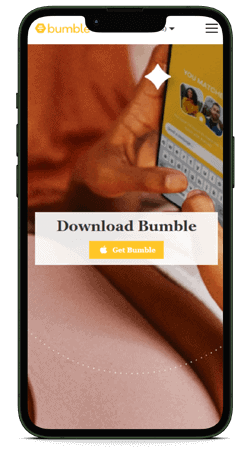
What’s Bumble Best For?
Bumble is often considered best for those who are looking for more meaningful connections and a safer online dating experience. Here’s why:
- Women-First Approach: In heterosexual matches, women must initiate the conversation, which can result in more respectful interactions and fewer instances of unsolicited messages.
- Multi-Purpose Networking: Beyond dating, Bumble offers Bumble BFF for making new friends and Bumble Bizz for professional networking, making it a more versatile platform.
- Safety Features: Bumble emphasizes user safety with options like photo verification and in-app video calling, providing an extra layer of security.
- Detailed Profiles: Bumble encourages users to fill out their profiles with more detail, which can help them make more informed choices when swiping.
- Relationship-Oriented: Given its women-first approach and emphasis on meaningful connections, Bumble tends to attract users who are more interested in serious relationships rather than casual hookups.
- Age Demographics: Bumble tends to attract a slightly older, more mature user base compared to Tinder, which may align better with those looking for serious commitment.
Bumble is best for people who prioritize safety, and meaningful connections and are open to dating, making friends, or networking professionally.
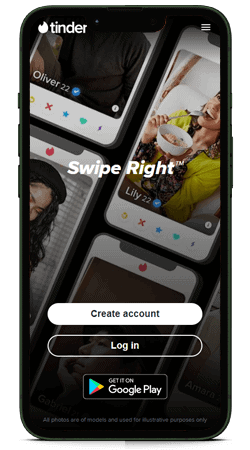
What’s Tinder Best For?
Tinder is generally considered best for a broader range of dating experiences, from casual hookups to long-term relationships, and for an expansive, global user base. Take a look at the following reasons why it’s best for a wider range of dating choices:
- Volume of Users: With a large, diverse user base, Tinder offers more options, increasing the odds of matching with someone you find attractive or interesting.
- Simplicity: The app’s straightforward swiping mechanism makes it easy to use, attracting those who want a no-frills approach to online dating.
- Global Reach: Tinder is available in almost 200 countries and offers multiple language options, making it ideal for international dating or meeting people while traveling.
- Flexibility: There are fewer rules about who initiates contact, making it easier for either party to start a conversation once a match has been made.
- Various Relationship Types: While often associated with casual relationships, the sheer volume of users means that those looking for all types of relationships can find what they’re seeking.
- Younger Audience: The app tends to attract a younger user base, often between the ages of 18 and 30, which might suit those who are looking for partners in that age range.
- Features: Tinder offers various premium features like Boost and Passport, which can enhance the user experience and increase the chances of getting a match.
Tinder is best for those who want a wider pool of potential matches, are open to various types of relationships, or who appreciate a simple, straightforward online dating experience.
Takeaways
Bumble and Tinder both have their own unique features and cater to slightly different demographics. If you’re looking for a platform where women take the lead and you can also network or find friends, Bumble is your go-to. On the other hand, if you prefer a larger user base and more casual interactions, Tinder might be the app for you.
Choosing between Bumble and Tinder all boils down to what you’re looking for in a dating experience. With the continued rise of online dating, both apps have adapted to include video call features, emphasizing user safety. So why not try both and see which one wins your heart? Take advantage of each platform’s free versions to see which is best for you–or stay on both to double your dating options. If you decide that neither Bumble or Tinder is the app for you, take a look at our extensive list of dating app reviews!
